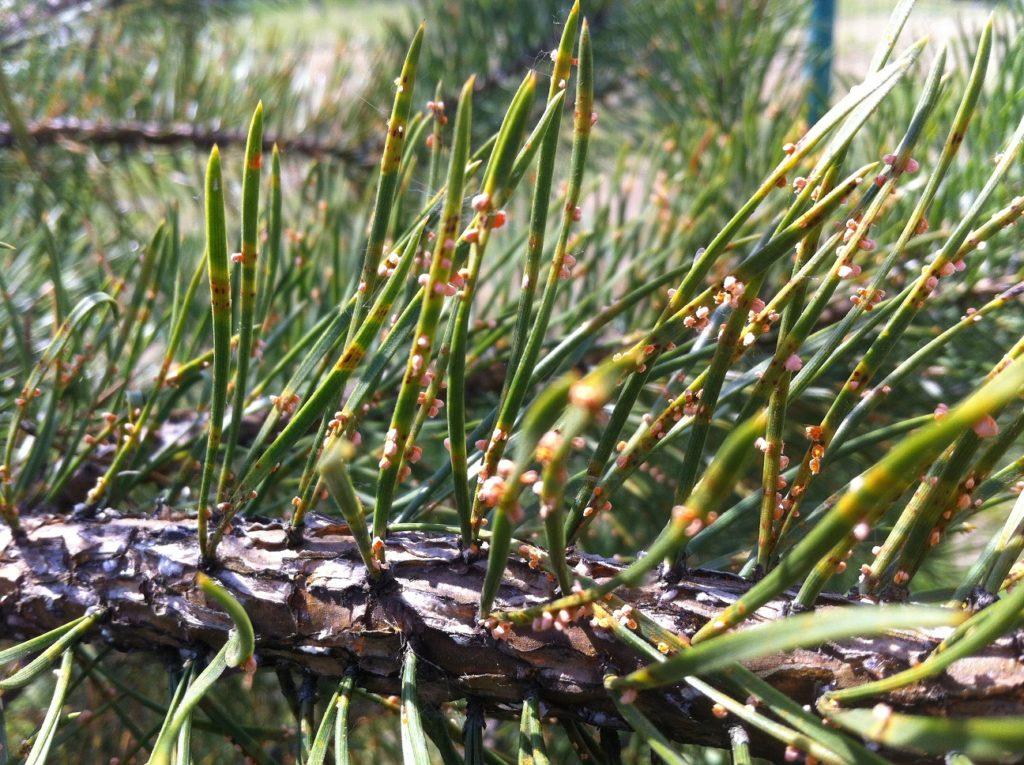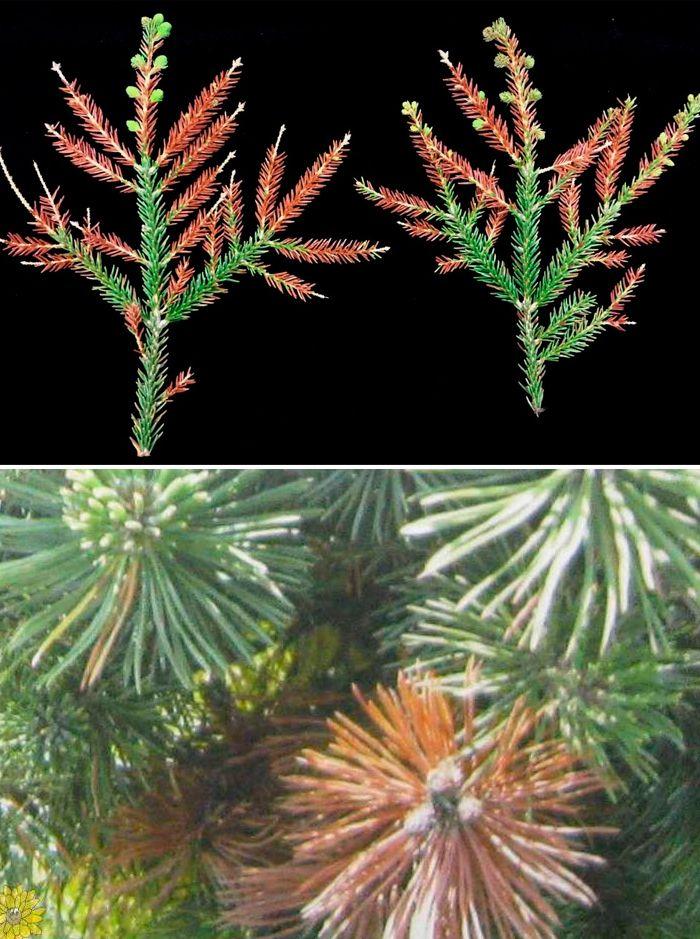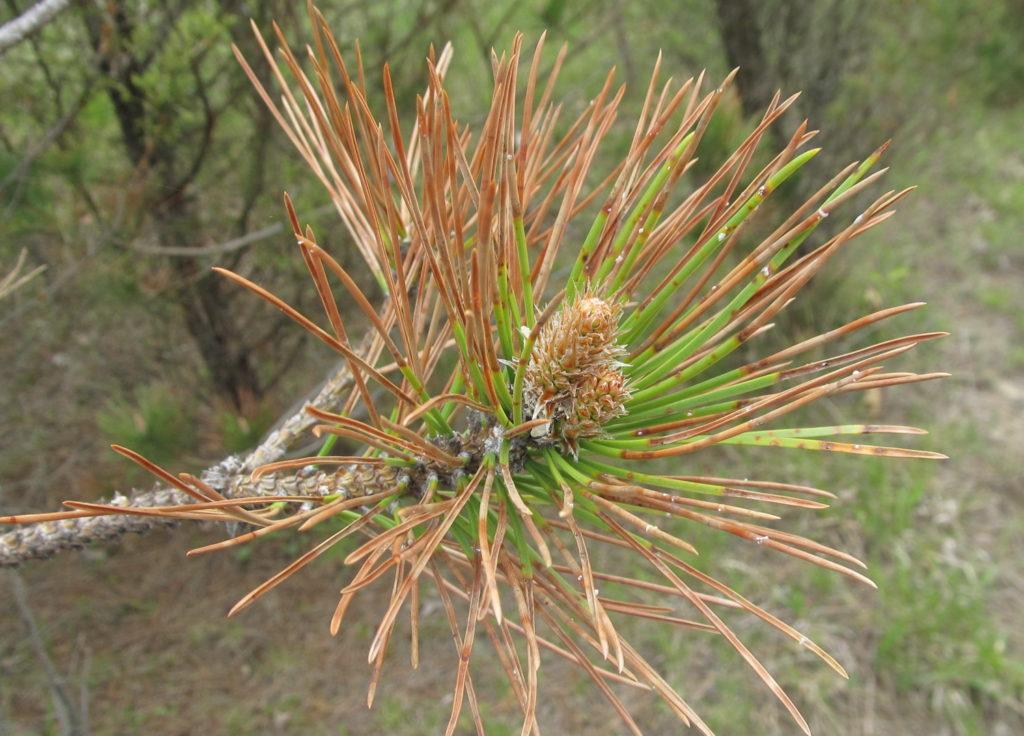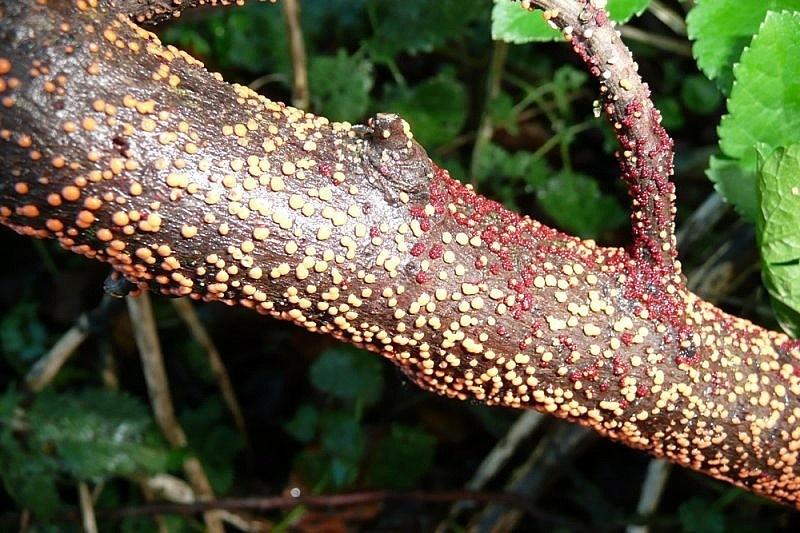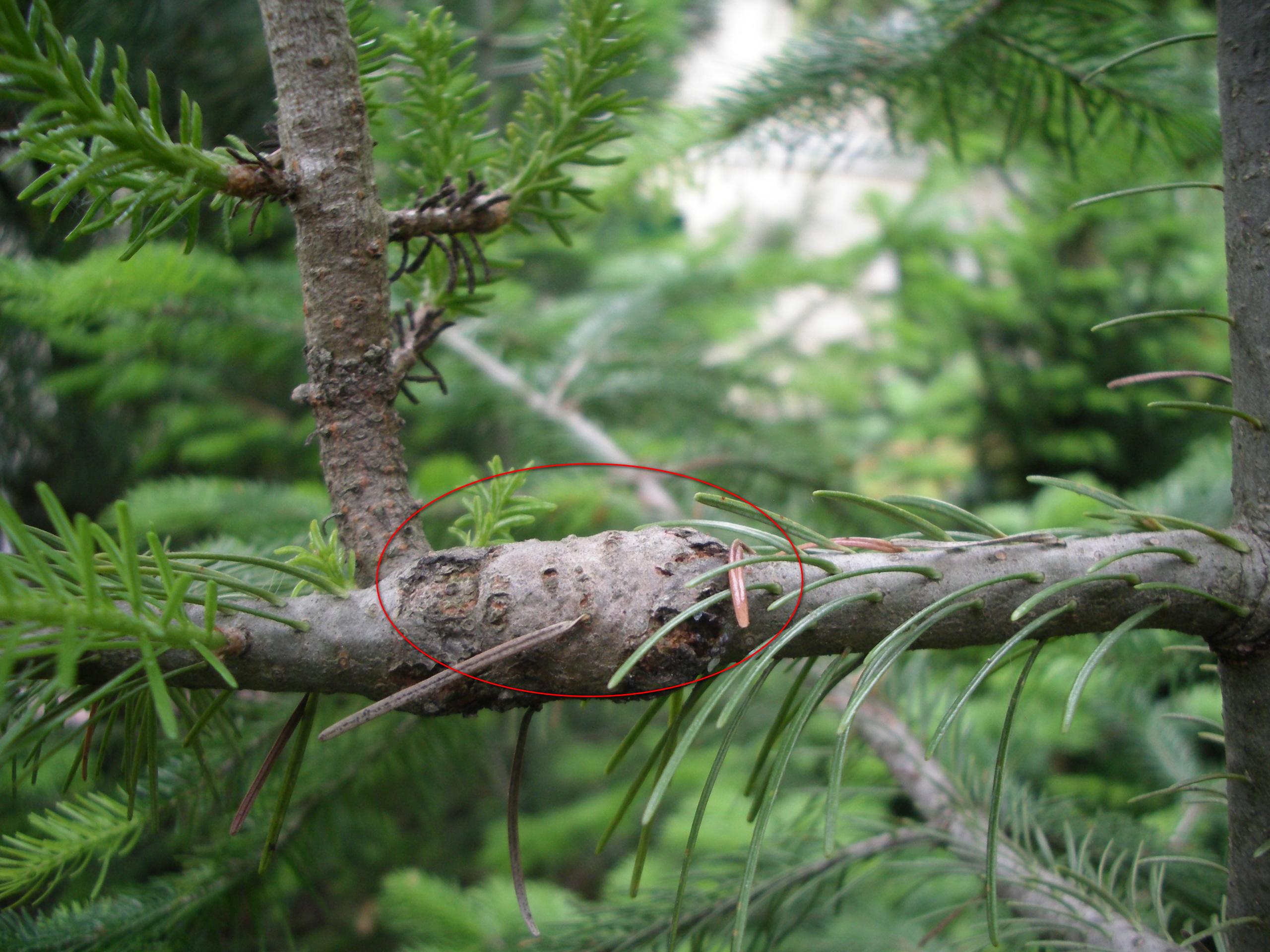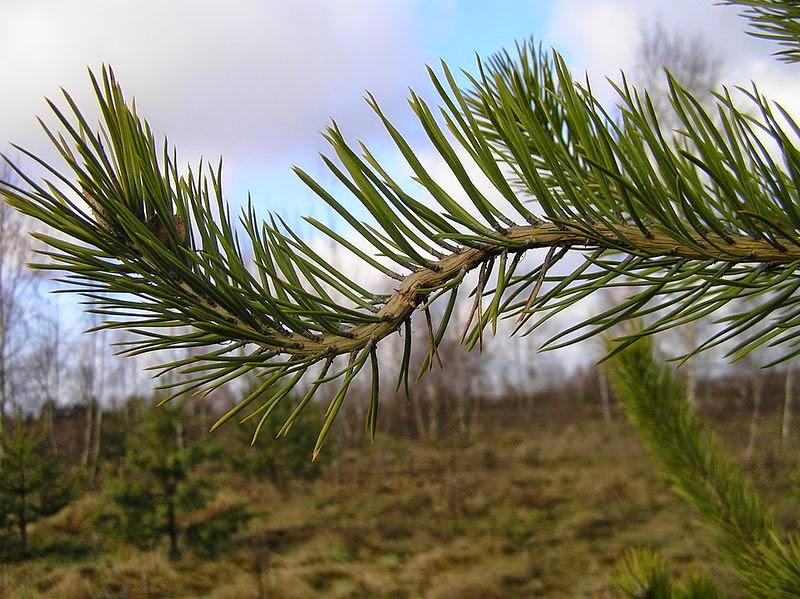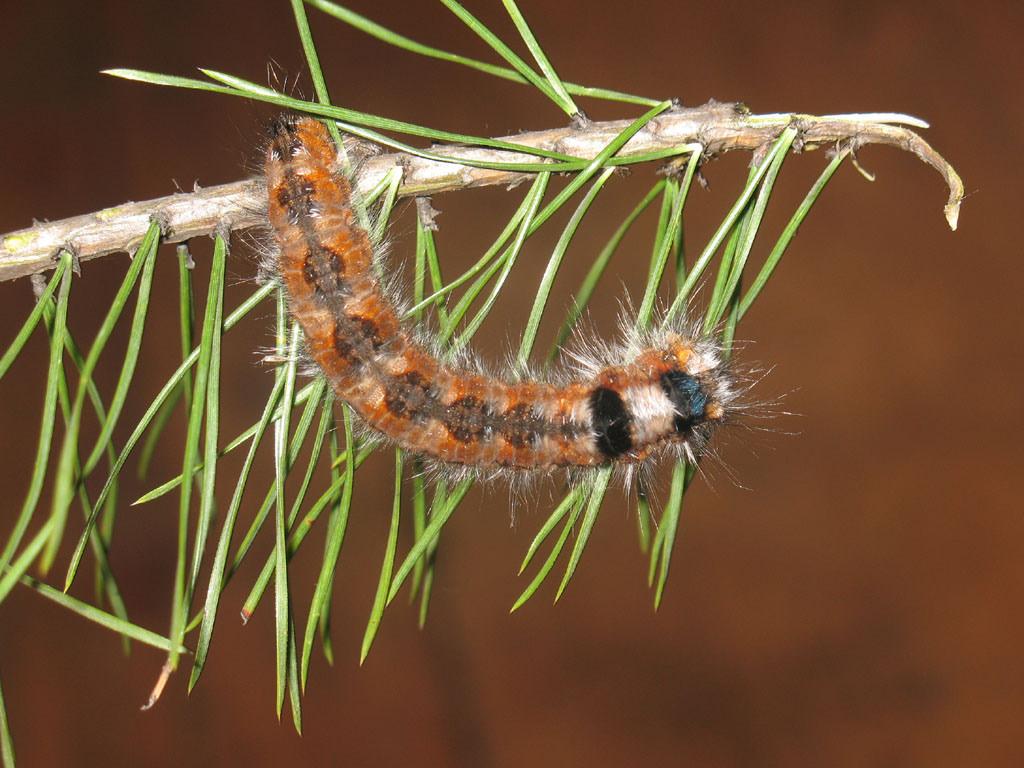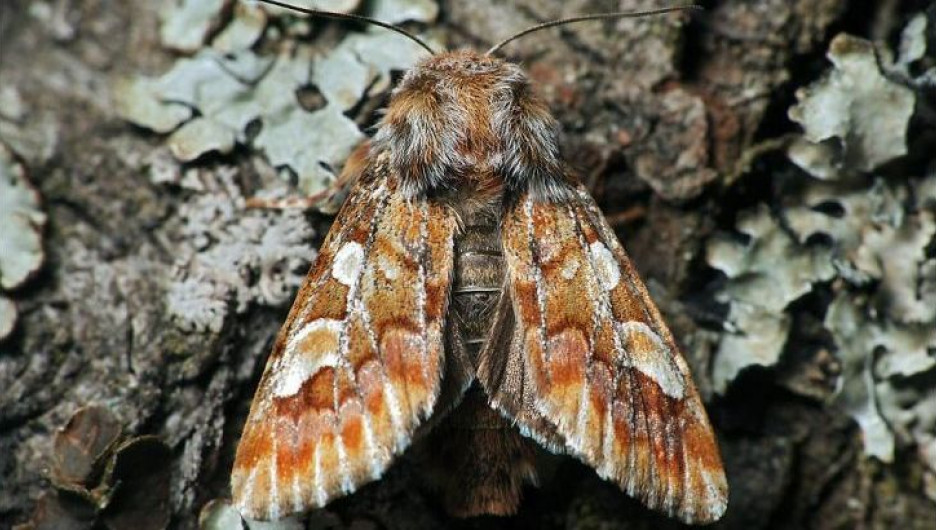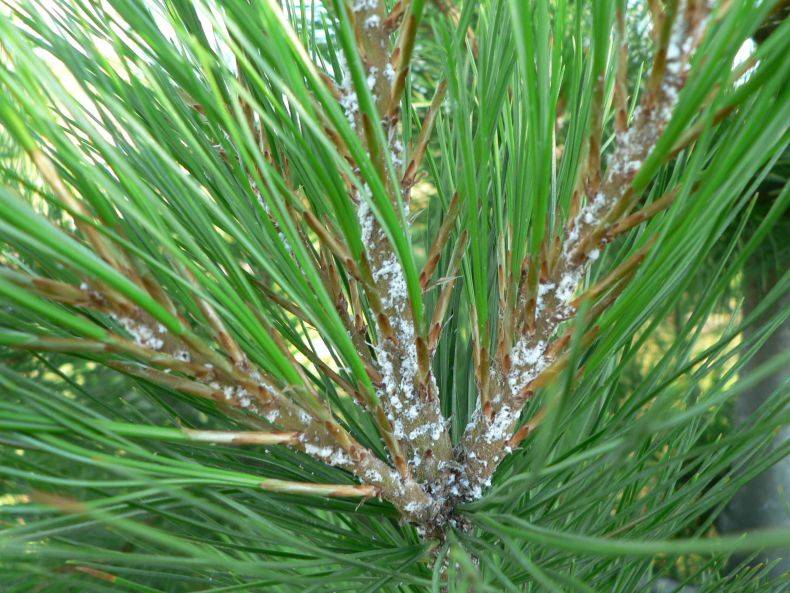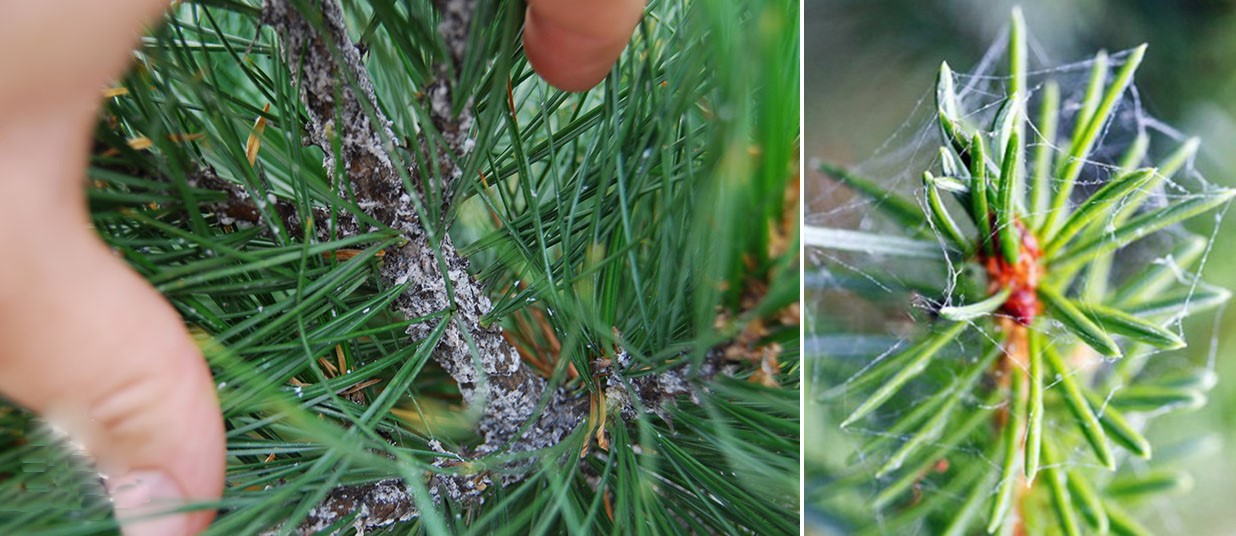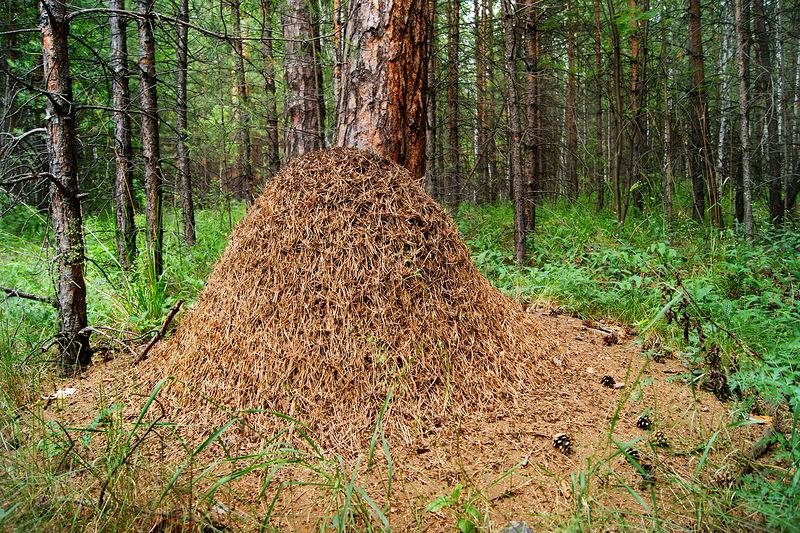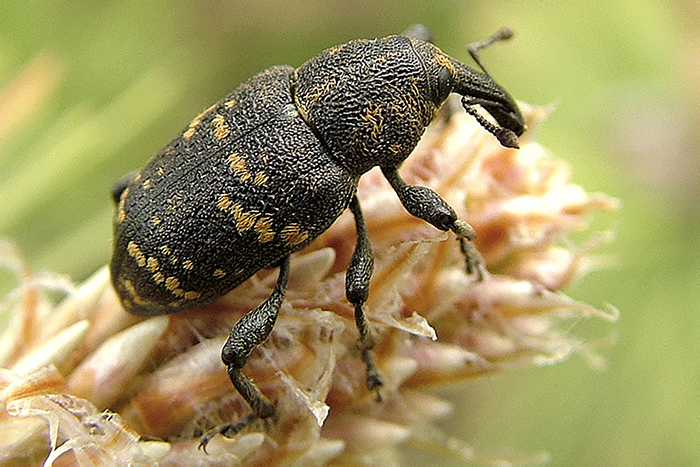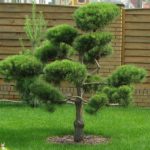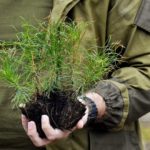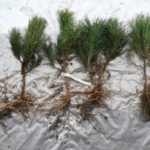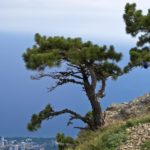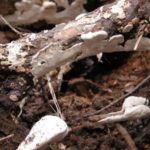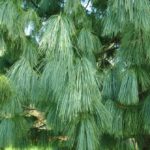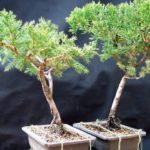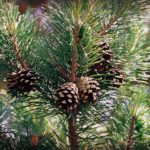Pine is a beautiful tree, which is characterized by excellent decorative properties and a pleasant aroma. Despite its undemanding requirements for growing conditions, this plant sometimes suffers from various pathologies and pest attacks. Most often this happens when crops are grown in unfavorable conditions. Today, many pine diseases are known, which differ in their characteristics.
Causes of infection
Infection of Scots pine or any other variety most often occurs in warm and humid weather. Typically, such conditions are observed in the fall. For some diseases, well-moistened soil is enough to moisten the tree.
Therefore, it is undesirable to water the pine tree too often. If the trunk is covered with bark with a large number of cracks or has significant lesions, such places become excellent passages for all kinds of parasites.
Thus, caterpillars often live on plants under 30 years old. Pines of this age still have many young shoots growing. They are distinguished by succulent bark and delicate needles, which insects really like.
Trees planted too close can also cause problems. They are caused by a lack of sun, lack of air exchange, and a minimum of evaporation. In this case, the crop will become sick and affect other plants on the site.
Another common cause of the development of pathologies is the influence of natural factors. Any natural disaster provokes the weakening of trees and the development of various pathologies. Fungal diseases often develop after a long spring or a warm winter with little snow. They almost always appear after a long period of precipitation. Pine may also suffer due to a deficiency of microelements, unsuitable soil composition and unfavorable climate.
How to identify a sick tree
For inexperienced gardeners, most diseases of Scots or mountain pine have similar symptoms. The most common symptoms include the following:
- orange dots;
- ugly asymmetrical growths;
- cobwebs on needles;
- white coating on the needles.
Common diseases
Today, many pine pathologies are known, the treatment of which must begin immediately. In advanced cases, trees have to be completely removed so that they do not become a source of infection for other crops.
Rust
The causative agent of this infection is considered to be the pathogenic fungus Coleosporium. Rust is considered one of the most common diseases of conifers. It is quite easy to identify pathology. At the initial stages of its development, orange pads form on pine needles. After which the needles turn yellow. As a result, the tree loses its attractiveness. In advanced cases, pathology can lead to the death of the culture.
The disease is treated with products containing a high copper content. To do this, the tree must be treated with such agents as Oxychom or Kuproksat. During treatment, it is recommended to spray the affected plant itself and nearby plantings, including herbaceous perennials. Fungal spores easily spread to plants that are nearby.
Fusarium
This pathology mainly affects young, immature plants. In this case, the needles begin to turn yellow and red, after which they dry out and fall off. After some time, the amount of greenery decreases more and more, the tree dries out, and then completely dies.
If fusarium has already appeared, it is impossible to get rid of it. That is why it is so important to pay due attention to the prevention of this disease. To do this, it is recommended to disinfect pine seedlings before planting.Systematic implementation of preventive treatments is of no small importance. It is also recommended to weed the tree trunk circle and clean it of any dirt.
Umbrella disease
With the development of this pathology, the uppermost bud begins to dry out, which subsequently dies. The disease then affects the entire shoot. As a result, all upper branches die. This pathology is also called scleroderiosis. At the same time, a white coating often appears on the shoots and needles of pine trees.
The risk of developing pathology increases in conditions of high humidity. To stop the progression of the disease, it is recommended to prune the affected branches and treat the bark with fungicidal preparations.
Cortical necrosis
Sometimes pine trees become covered with necrotic plaque. As the disease progresses, drying of the bark is observed. It becomes covered with plaque. In addition, fungal colonies form in these places.
From the moment of infection to the appearance of signs of pathology, a lot of time often passes - up to several months. Weakened trees are more susceptible to necrosis. The risk of developing the disease increases in frosty or hot weather. Also, the likelihood of pathology occurring increases if the cortex is damaged by animals.
To cope with the disease, it is necessary to prune the tree to living areas. In this case, it is definitely recommended to get rid of fungal colonies and treat these areas with copper-containing preparations. Full spraying of trees with fungicides is of no small importance. This must be done systematically until complete recovery.
Rust cancer
This pathology is accompanied by the appearance of cracks on the trunk. Moreover, orange bubbles with spores appear in these zones.After their rupture, wounds form in this place through which resin oozes. The presence of such cracks significantly increases the risk of tree death. The pathology can be cured only at the initial stage of infection. In this case, the area with bubbles must be carefully cleaned.
At the processing stage, it is important to get rid of all infected tissue and trim off some healthy tissue. Then it is recommended to wet the affected area with a solution of copper sulfate. Its concentration should be 3-5%. Then it is recommended to treat the damaged area with garden varnish.
If branches are damaged, they must be removed. After performing all of the above manipulations, there is a slight chance of getting rid of the pathology. However, successful treatment at this stage is highly unlikely.
Pine spinner
The development of this pathology is caused by rust fungi Melampsora pinttorgua. The disease is characterized by deformation of young pine shoots. Pine whirligig affects both seedlings and young pines up to 10 years old.
The disease poses a real threat to annual plants. It can cause their mass death. Infection with fungi usually occurs in the second half of May. Infection involves basidiospores, which are formed on the litter of the previous goal.
To avoid the development of pathology, in the spring, during the formation of basidiospores, it is worth treating three times with a solution of Bordeaux mixture with a concentration of 1%. It is also permissible to use a solution of polycarbacin. Its concentration should also be 1%.
Pests and their types
Pine can suffer from attacks from a variety of parasites, each of which can cause serious damage to the tree. To cope with pests, you need to identify them in a timely manner and strictly adhere to the instructions for destruction.
Pine silkworm
This parasite is considered one of the most common and dangerous for pine, since it infects the plant most often and is rarely found on other crops. This caterpillar feeds on pine needles.
The danger of silkworms lies in the fact that in the absence of timely measures taken, the parasite can completely eat up the pine tree. The insect is resistant even to winter frosts. It simply waits for them near the roots, and with the arrival of spring it returns to the branches.
Pine is treated with insecticidal preparations. The most effective means include “Lepidocid”. To spray coniferous plantings, you need to prepare a solution and use 3 liters of liquid per 1 hectare.
Pine armyworm
This parasite primarily consumes pine needles and buds. Although the feeding period of the insect is literally 30-40 days, it manages to seriously damage the plantings. In this case, fresh buds and shoots suffer, which ultimately causes the crop to dry out.
The presence of cutworm can be suspected by a noticeable depletion of needles and damage to buds and shoots. To cope with the pest, it is necessary to use Lepidocide and other insecticides.
Pine hermes
This parasite is a type of common aphid that absorbs the juices of pine needles. The pest can be identified by various signs. At the initial stage of damage to a tree, pine needles become covered with a white coating.Subsequently, the needles become yellow and fall off.
To cope with pine hermes, it is worth using insecticides - in particular, Actellik, Karbofos, and Decis work well. Plantings need to be treated throughout the season. This is done at intervals of 4 weeks, since generations of parasites change quickly. To make the treatment even more effective, you need to pour Aktara solution under the root.
Green caterpillars
Such parasites are also called pine sawflies. They cause damage to the needles. These pests are 8 millimeters in size and can greatly harm the crop. When a tree is infected, yellow spots often appear on the bark. At the same time, the pine needles curl, turn yellow and dry out. As a result, all the needles seem eaten away.
Almost all insecticides help control caterpillars. But after processing, it is important to dig up and treat the soil. The larvae of parasites are resilient and can hide in the ground.
Spider mite
This pest often attacks coniferous plants. Spider mites are small in size, so identifying an infestation in the initial stages can be quite difficult. The risk of parasite attacks increases with high soil and air humidity and dense plantings. This also occurs in consistently warm weather.
When pine trees are infested with spider mites, the following signs appear:
- the needles are covered with small light dots, which gradually increase in size and acquire a brown color;
- the branches are covered with white cobwebs;
- the tree stops growing and seems weak;
- death of the culture occurs 2-3 years after infection.
To cope with parasites, it is necessary to use acaricides, since not all insecticidal preparations have the desired effect on mites.The most effective means include “Sunmite”, “Oberon”. It is worth processing pine at least twice. This is done at intervals of 10-14 days.
Black caterpillars
Such parasites are the larvae of leafminer moths. They can also cause serious harm to the pine tree. To attach the larvae to the needles, the female entangles it with a web. Parasites are characterized by rapid reproduction. Their name is due to the fact that the larvae are able to make holes near the base of the needles. As a result, when touched, the needles fall off.
To cope with parasites, it is necessary to carry out insecticidal treatment, loosen the soil around the trunk and act on it with effective means. It is also necessary to get rid of dead bark and seal holes in it.
Ants
Many gardeners are sure that ants do not harm pine trees. Indeed, many species of these insects do not feed on needles or other elements of wood. But the presence of an anthill near or in the tree trunk clearly affects the plant negatively. The movement of parasites along the tree trunk leads to the spread of spores, bacteria and fungi. They are also able to penetrate the smallest cracks in the trunk.
To get rid of ants, it is recommended to rub the pine bark with garlic solution. To do this, you need to chop 200 grams of garlic and leave it in 1 liter of water for several hours. It is also permissible to use a soap composition with tar. If folk remedies do not help, you should use special chemicals.
Weevil beetle
These parasites consume the pulp of the scales of the cones. At the same time, they gnaw through the surface of pine fruits. After the resin flows out, the females lay eggs inside.Moreover, they most often provoke damage to annual specimens. After the invasion of parasites, the cones can no longer be used.
Usually beetles have to be collected by hand. To make this process more effective, the pine needs to be shaken. It is recommended to spread bedding on the ground first. To attract the attention of insects, you should turn on a flashlight.
Disease Prevention
Any pine disease that is caused by fungal spores or parasites is much easier to prevent than to treat. To maintain the health of seedlings and adult crops, it is important to adhere to the following rules:
- Monitor the quality and moisture level of the soil. The systematic application of mineral fertilizers is of no small importance.
- Plant pine trees in well-lit places with adequate ventilation. Many pathologies arise when crops are grown in shady places and when moisture stagnates in the soil.
- Select only high-quality seedlings for planting.
- Treat pine trees with fungicides and Bordeaux mixture every year. These remedies do not harm the plant, but make it possible to avoid attacks by parasites and cure pathologies in the initial stages.
- Systematically loosen and weed the soil near the root system. It is important to avoid the growth of weeds. It is unwanted vegetation that serves as a common source of pests and transmits fungal spores.
In addition, every year it is necessary to perform preventive pruning of pine trees and get rid of dry, diseased and injured shoots. After cutting and harvesting the needles, the branches must be burned. Otherwise, there is a risk of damage to healthy trees.
Strengthening plants is considered an important method of prevention.By systematically adding the required amount of nutrients, trees can maintain their health and remain resistant to various infections. To achieve the required results, it is recommended to use combination drugs.
Today, many pine diseases are known, each of which has its own characteristics and symptoms. Coniferous trees also often suffer from pest attacks. To cope with parasites and eliminate signs of illness, it is necessary to take timely measures. For this purpose, insecticidal preparations and fungicides are used.

